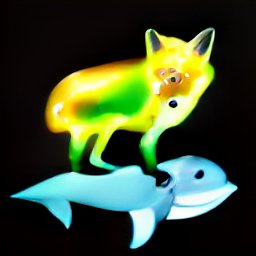Oroshan shamanism
This article is incomplete because it is pending further input from participants, or it is a work-in-progress by one author. Please comment on this article's talk page to share your input, comments and questions. Note: To contribute to this article, you may need to seek help from the author(s) of this page. |
Oroshan shamanism (Oroshan: Sətiłpuči) is the traditional faith of the Oroshan people. It is a variety of shamanism, a common religious term uniting several faiths based on similar motifs in eastern Surucia. Oroshan shamanism is considered the most widely practised form of shamanism in the modern day, owing to its strength and lack of persecution in Oroshia.
Like most varieties of shamanism, an emphasis is placed on the connection to a spirit world, a connection to which is possible through a shaman (healer, ŋaptitəŋka). Shamans are considered important cultural teachers, as they are the only ones who have this connection to the spirit world. Spirits take the form of animals, and can represent everything from animals themselves, to elements of the earth, and even abstract emotions.
Reenactment of the spirit world
Oroshan shamans enter a trance-like state in which they are thought to enter the spirit world, and they will then reenact their spirit world experience through song and dance to communicate it. Songs are composed of imitations of the sounds of the various animal spirits, accompanied by rhythmic drumming. Various myths involving animal spirits are also often reenacted, as a form of teaching and storytelling.
Myths
Oroshan shamanism is based on oral traditions passed down from generation to generation, which are accompanied by song and dance. Oroshan myths involve the creation of the world, and characterize the natural phenomena experienced in Oroshia.
Creation story
According to Oroshan legend, the human world sits on the back of a giant reindeer deity, vivikik, who is on an eternal migration through time. The backbone of vivikik is said to have created the Gyo-chin Mountains, pushed up as a bony ridge. This reindeer spirit eventually grew lonely on her eternal migration, and fashioned two companions to keep her company: a red and grey fox. The red fox's name is mił, and is the sun spirit; the grey fox's name is qameł, and is the moon. They ride on the back of a giant white whale named pəłin, "cloud". The fox spirits each take a turn watching the reindeer mother's back, making sure no flies come to rest on her back. It is said that, if flies come to rest on the reindeer mother's back, then the reindeer mother has grown weary and her journey will soon end, foreboding the apocalypse.
The spirit world normally takes the form of a lush forest, filled with berries and interlaced by rivers laden with salmon. The salmon spirit represents elation, but also greed; the berry spirit is both benevolent and malevolent, a marten, and represents kindness and callousness. The wolf spirit represents lust, and will repeatedly attempt to lure the reindeer spirit from her migration path in spirit quests.
Journey to the afterlife
Oroshan shamanism posits the existence of a life after death, in the spirit world. A shaman is present at death to lead the spirit of the person into the spirit world. The gate to the spirit world is made of two bent tamarack trees, a popular motif in Oroshan culture. Beyond these trees is a pond of thick sludge, impossible to swim out of. A bear deity, judgment, is waiting with a canoe made of scuttling insects to take the spirit to the other side. If the person's spirit is too heavy for the bear to paddle with across, or the person's spirit is too uncomfortable in the boat, the soul is judged unworthy of the spirit world and is cast into the sludge, left to drown.
Should the person's spirit make it to the other side of the lake, they are greeted with a vast canyon made of the bones of animals and people, whose walls form and reform the faces of people and animals as the person's spirit walks down this canyon; this is the entrance to the spirit world. In the spirit world, they are granted eternal life, free to accompany the reindeer mother on her journey.
Spirit Deities
- Vivikik, "mother reindeer", is the earth, vəkłəmp.
- Mił, "sun", represented by tłitło, the red fox. Brings vəŋočəči, "warmth", and jak, "fire".
- Qaməł, "moon", represented by kaso, the Arctic fox. Brings sisip, "wind".
- Pəłin, "cloud", represented by paka, the whale. Carries mił and qaməł.
- Əkiʔm, "flies", represent kisłəmp, "torment".
- Məsəğ, "salmon", represents elation, aŋtiŋip, but also greed, topamči.
- Qəpa, "marten", associated with sikaʔv, "berries", represents łupvəči, "kindness", and kisvəči, "indifference, callousness".
- Vał, "wolf", is iskuvəči, "lust, temptation".
- Məkva, "bear", is tispiskav, "travel", and łupłəmpiskutəŋči, "judgment of moral worth".
- Uʔv, "insects, beetles", is łip, "labour".
- Qapəł, "mouse", is ğałvəči, "hunger", and paskisłəmpči, "deception".
- Sikəł, "trout", is aŋkačəči, "strength".

